Chemical & Materials
Building Integrated Photovoltaics (BIPV) Market Research Report: Global Market Review & Outlook (2020-2025) – IMARCGroup.com
According to the latest report by IMARC Group titled, “Building Integrated Photovoltaics Market: Global Industry Trends, Share, Size, Growth, Opportunity and Forecast 2020-2025”, the global building integrated photovoltaics market grew at a CAGR of around 20% during 2014-2019.
Building integrated photovoltaic (BIPV) is a solar power generating component that is used in the construction of roofs, skylights and facades in a building. It acts as the outer layer of the structure, which produces electricity for on-site use and exports it to the grid. It aids in reducing material and electricity costs and minimizing the utilization of fossil fuel and the emission of ozone-depleting gases.

The escalating demand for integrated solar energy solutions in commercial installations, owing to the growing awareness about green and zero-emission buildings, represents one of the key factors driving the global BIPV market growth. Furthermore, governments of various countries are implementing favorable policies to promote the utilization of renewable energy, which, in turn, is propelling the market growth. They are also supporting infrastructural developments in the form of optimum grid-parity of photovoltaic (PV) systems, which is expected to create a positive outlook for the market in the coming years.
Request to get the sample report: https://www.imarcgroup.com/building-integrated-photovoltaics-market/requestsample
Insights on Market Segmentation:
Market Breakup by Product Type
- Polycrystalline
- Thin Film
- Other
Market Breakup by Application
- Roof
- Facades
- Glass
- Other
Browse full report with detailed TOC and list of figures and tables: https://www.imarcgroup.com/building-integrated-photovoltaics-market
Market Breakup by End-Use
- Commercial
- Residential
- Industrial
Market Breakup by Region:
- Europe
- North America
- Asia Pacific
- Middle East and Africa
- Latin America
Competitive Landscape:
The competitive landscape of the industry has also been examined with some of the key players being Ankara Solar AS, Ertex Solartechnik GmbH, Hanergy Holding Group Ltd, Hermans Techniglaz, ISSOL sa, Navitas Green Solutions Pvt. Ltd, NanoPV Solar Inc., Polysolar, Sphelar Power Corporation, VIASOLIS,etc.
About Us
IMARC Group is a leading market research company that offers management strategy and market research worldwide. We partner with clients in all sectors and regions to identify their highest-value opportunities, address their most critical challenges, and transform their businesses.
IMARC’s information products include major market, scientific, economic and technological developments for business leaders in pharmaceutical, industrial, and high technology organizations. Market forecasts and industry analysis for biotechnology, advanced materials, pharmaceuticals, food and beverage, travel and tourism, nanotechnology and novel processing methods are at the top of the company’s expertise.
Contact Us
30 N Gould St
Ste R
Sheridan, WY 82801
USA
Email: sales@imarcgroup.com
Website: https://www.imarcgroup.com
Follow us on twitter: @imarcglobal
As the novel coronavirus (COVID-19) crisis takes over the world, we are continuously tracking the changes in the markets, as well as the purchase behaviours of the consumers globally and our estimates about the latest market trends and forecasts are being done after considering the impact of this pandemic.
Medium-Density Fibreboard (MDF) Market Research Report 2020, Industry Trends, Share, Size, Demand and Future Scope
A new research report by IMARC Group, titled “Medium-Density Fibreboard Market: Global Industry Trends, Share, Size, Growth, Opportunity and Forecast 2020-2025”, estimates that the global medium-density fibreboard market reached a value of US$ 24.92 Billion in 2019. Medium-density fibreboard (MDF) is a wood product made by mixing wood fibres with adhesives to form flat panels. It offers superior quality as compared to solid wood or the other compressed manufactured wood products such as plywood. Owing to this, it is used in a wide variety of residential and commercial projects, such as flooring, toys, furniture, ceiling moulding, cabinetry, industrial packaging, etc.
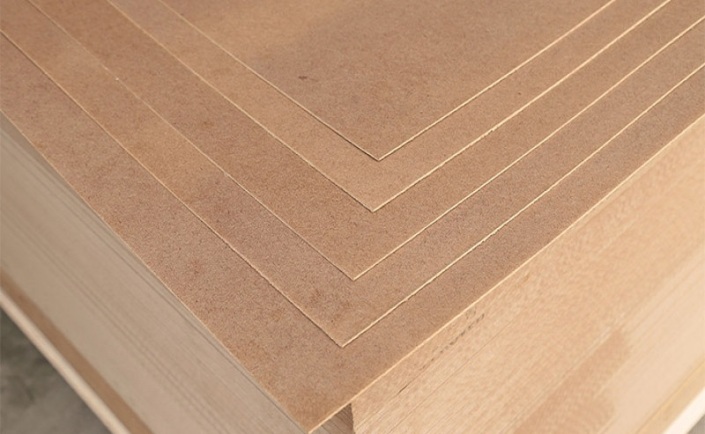
Request for a free sample copy of this report: https://www.imarcgroup.com/medium-density-fibreboard-market/requestsample
Global Medium-Density Fibreboard Market Drivers/Constraints:
Medium-density fibreboard is manufactured from recycled wood which helps in saving trees and protecting the environment. The increasing environmental concerns among the consumers are fuelling the demand for medium-density fibreboard.
Medium-density fibreboard does not expand or contract due to heat and humidity as opposed to solid wood. As a result, it is extensively used in kitchens and bathrooms in high humid and tropical regions. This, in turn, has bolstered the sales of medium-density fibreboard in these regions.
Due to the growing population, rapid urbanisation, and rising disposable incomes of the consumers, there has been an increase in the number of commercial and residential spaces. This is projected to create a positive impact on the medium-density fibreboard market.
The strict rules and regulations set up by the government regarding the use and manufacturing of medium-density fibreboard restricts the market growth. Moreover, the high-maintenance costs, lower strength compared to solid wood and water soaking issues are some of the other factors restraining the overall growth of the market.
Browse full report with detailed TOC and list of figures and tables: https://www.imarcgroup.com/medium-density-fibreboard-market
Breakup by Application:
The report has categorised the application of the global medium-density fibreboard (MDF) into residential and commercial, and new construction and replacement segments.
Breakup by Residential and Commercial Applications
1. Residential
2. Commercial
Currently, the residential sector represents the largest application segment due to the expanding applications of medium density fibreboard in doors, shelving, furniture panels and embossing. On the other hand, rapid industrialization, particularly in the developing nations, has accelerated the demand for medium-density fibreboard in commercial applications including moulding, millwork, laminating and finishing, and edge shaping and machining.
Breakup by New Construction and Replacement Application
1. New Construction
2. Replacement
The report finds that the new construction segment dominates the global medium-density fibreboard market. In this segment, medium-density fibreboard is used for interior designing and building applications such as window boards, wall linings, skirtings and architraves, decorative facades as well as the core material for some floorings.
Breakup by Region
1. Asia-Pacific
2. Europe
3. North America
4. Latin America
5. Middle East and Africa
On a geographical front, Asia-Pacific represents the largest market for medium-density fibreboard due to the increasing disposable incomes, rapid expansion of the construction sector and improving standards of living in the region. Other major regions are North America, Europe, Latin America, and Middle East and Africa.
Competitive Landscape:
The global medium density fibreboard industry consists of numerous small, medium and large players, due to which a high degree of competition prevails in the industry. Some of the leading players operating in the market are:
M. Kaindl KG
Sonae Arauco
Weihua Corporation
Dynea
Guangdong
Duratex SA
About Us
IMARC Group is a leading market research company that offers management strategy and market research worldwide. We partner with clients in all sectors and regions to identify their highest-value opportunities, address their most critical challenges, and transform their businesses.
IMARC’s information products include major market, scientific, economic and technological developments for business leaders in pharmaceutical, industrial, and high technology organizations. Market forecasts and industry analysis for biotechnology, advanced materials, pharmaceuticals, food and beverage, travel and tourism, nanotechnology and novel processing methods are at the top of the company’s expertise.
Contact Us
IMARC Group
USA: +1-631-791-1145
Email: sales@imarcgroup.com
Website: https://www.imarcgroup.com
Follow us on twitter: @imarcglobal
Australia and New Zealand Cross Laminated Timber (CLT) Market Research Report 2020, Industry Price Trends, Share, Size, Demand and Future Scope
The Australia and New Zealand cross-laminated timber (CLT) market reached a volume of XX Cubic Meters. Looking forward, the market to grow at a CAGR of XX% during the forecast period (2020-2025)., according to a new report by IMARC Group.
Cross-laminated timber (CLT) is a prefabricated wood panel that is manufactured by gluing multiple layers of solid-sawn lumber together. These layers are stacked at a perpendicular angle to provide structural rigidity and increase the splitting resistance of the product. CLT is flexible, light in weight, cost-effective, offers high strength, and has a low environmental impact. As a result, it is replacing conventional construction materials, such as steel and cement, in Australia and New Zealand for constructing high-rise buildings, bridges, parking structures and pavilions.
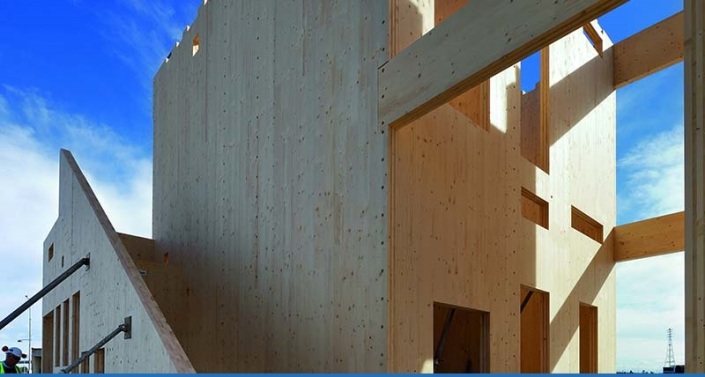
Market Trends
Massive timber construction, in confluence with the rising demand for green buildings, is driving the cross-laminated timber market growth in Australia and New Zealand. In addition to this, owing to the dimensional stability, versatility, strength, and secure and faster installation of CLT, it is increasingly being used in the non-residential construction of storage facilities and factories in the region. Moreover, technological advancements, such as the introduction of computer-controlled machining equipment to facilitate the prefabrication of wooden building components, are impelling the market growth. Besides this, the Wood Encouragement Policy (WEP) initiated by the Government of Australia is promoting the utilization of timber in the country, which in turn is catalyzing the demand for the CLT in the country.
Note: We are regularly tracking the direct effect of COVID-19 on the market, along with the indirect influence of associated industries. These observations will be integrated into the report.
Get a PDF Sample for more detailed market insights: https://www.imarcgroup.com/australia-newzealand-clt-market/requestsample
Australia and New Zealand Cross Laminated Timber Market 2020-2025 Analysis and Segmentation:
Competitive Landscape:
The competitive landscape of the market has been studied in the report with the detailed profiles of the key players operating in the market.
Some of these players are:
Stora Enso Oyj
KLH Massivholz GmbH
Binderholz GmbH
XLam Australia Pty Ltd./NZ Ltd.
For more information about this report visit: https://www.imarcgroup.com/australia-newzealand-clt-market
About Us
IMARC Group is a leading market research company that offers management strategy and market research worldwide. We partner with clients in all sectors and regions to identify their highest-value opportunities, address their most critical challenges, and transform their businesses.
Contact US: IMARC Group
30 N Gould St, Ste R
Sheridan, WY 82801, USA
Website: https://www.imarcgroup.com/
Email: sales@imarcgroup.com
USA: +1-631-791-1145
Follow us on twitter: @imarcglobal
Linkedin: https://www.linkedin.com/company/imarc-group
Laminate Flooring Market Research Report, Market Share, Size, Trends, Forecast and Analysis of Key players 2025
According to the latest report by IMARC Group, titled “Laminate Flooring Market: Global Industry Trends, Share, Size, Growth, Opportunity and Forecast 2020-2025,” finds that the global laminate flooring market size reached a volume of 975 Million Sq. Meters in 2019, registering a CAGR of 2% during 2012-2019. Laminate flooring refers to a durable and versatile flooring solution made of melamine resin and fiberboard materials. It is composed of four layers, namely wear layer, design layer, core layer and back layer, which are fused using intense heat and pressure. Nowadays, laminate flooring is available in a wide variety of colors and designs, which enhance its aesthetic appeal among users. As it resists staining, scratching, denting and fading, laminate flooring has gained preference as a flooring material over the years.

Request to get the sample report: https://www.imarcgroup.com/laminate-flooring-market/requestsample
Global Laminate Flooring Market Trends:
Laminate flooring offers ease of installation, reduces the requirement for skilled labor and is a relatively inexpensive option as compared to engineered wood, solid hardwood, and stone floor coverings. It can even replicate stone, tiles as well as wood patterns. Besides these advantages, the rising population and improving standards of living have led to a rise in the demand for modern housing, particularly in emerging nations, which has significantly contributed to the growth of the market. Apart from this, substantial investments in the real estate sector, mounting construction activities, and the escalating demand for wood-based flooring materials have proliferated the growth of the market globally. Moreover, manufacturers are introducing laminate flooring with advanced features, such as custom prints and designs, better wear layers, enhanced locking mechanisms, high-quality visuals and improved chemical resistance. On account of these factors, the market is projected to reach a volume of around 1,048 Million Sq. Meters by 2025.
Explore Report Description: https://www.imarcgroup.com/laminate-flooring-market
Market Summary:
Market Breakup by Key Types:
1. HDF Laminates
2. MDF Laminates
Based on the types, the market has been bifurcated into high density fiberboard (HDF) and medium density fiberboard (MDF) laminates. At present, the MDF laminate is the most popular product type.
On the basis of the sector, the commercial sector dominates the market, holding the largest market share, followed by the residential sector.
Market Breakup by Sector:
1. Residential
2. Commercial
Breakup by Region
• North America
• Europe
• Asia Pacific
• Middle East and Africa
• Latin America
Region-wise, Asia Pacific accounts for the majority of the market share. Other major regions include North America, Europe, Middle East and Africa, and Latin America.
Competitive Landscape
The competitive landscape of the market has also been examined, with some of the key players being Mohawk Industries Inc., Tarkett S.A., Armstrong World Industries, Inc., Shaw Industries Group, Inc., Mannington Mills, Inc. and Beaulieu International Group.
Contact Us
30 N Gould St
Ste R
Sheridan, WY 82801
USA
Email: sales@imarcgroup.com
Website: https://www.imarcgroup.com
Follow us on twitter: @imarcglobal
Malic Acid Market Research Report 2020, Industry Price Trends, Share, Size, Demand and Future Scope
According to the latest report by IMARC Group, titled “Malic Acid Market: Global Industry Trends, Share, Size, Growth, Opportunity and Forecast 2020-2025”, the global malic acid market reached a volume of 83.4 Kilotons in 2019. Malic acid is a dicarboxylic organic compound with the molecular formula C4H6O5. It is a white crystal or crystalline powder which is soluble in water and ethanol. It is synthesized in all living organisms and offers a pleasant, sour taste to fruits like apples, grapes, apricots, blackberries, peaches, pears, strawberries and mangoes. Since this acid effectively absorbs moisture and has antimicrobial properties, it is used to increase the shelf life of packaged food and bakery items. It is also utilized as a preservative, an acidulant for pH control and food additive for flavor enhancement. Apart from food and beverage applications, it is extensively employed across industries like pharmaceutical, soap and detergent as well as cosmetic and personal care.
Request for free sample report: https://www.imarcgroup.com/malic-acid-technical-material-market-report/requestsample
Market Trends:
Malic acid offers numerous health benefits such as easing chronic fatigue syndrome, boosting liver health, aiding weight loss and improving hair quality. Growing awareness about these benefits, along with the increasing health consciousness among consumers, is providing thrust to the growth of the market. In addition to this, the acid is widely employed in the production of protein drinks and sugarless baked goods. The rising prevalence of obesity and diabetes worldwide is influencing the sales of these products. Moreover, favorable regulations by governments of several countries and regulatory authorities are expected to drive the malic acid industry. For instance, EPA regulations regarding the production and consumption of natural ingredients are boosting the sales of products which contain malic acid in Europe. Looking forward, IMARC Group expects the global malic acid market to continue its moderate growth during the next five years.
Browse full report with TOC: https://www.imarcgroup.com/malic-acid-technical-material-market-report
Market Segmentation:
Market Breakup by Product:
1. L-Malic Acid
2. D-Malic Acid
3. DL-Malic Acid
On the basis of products, the market has been categorized into L-malic acid, D-malic acid and DL-malic acid. Currently, DL-malic acid is the most popular product type, dominating the total market share.
Market Breakup by Application:
1. Beverages
2. Confectionery and Food
3. Personal Care
4. Others
Based on applications, the market has been divided into beverages, confectionery and food, personal care, and others. Amongst these, malic acid is mostly used in beverages since it is a preferred acidulent in the industry.
Market Breakup by Region:
1. Asia Pacific
2. North America
3. Europe
4. Middle East and Africa
5. Latin America
On the geographical front, Asia Pacific holds the leading position in the global market. Rising consumption of food across the region, owing to the growing population and inflating income levels, is fueling the demand for malic acid. Other major regions include Middle East and Africa, North America, Latin America, and Europe.
Competitive Landscape:
The competitive landscape of the market has also been analyzed with some of the key players being Changmao Biochem, Bartek, Thirumalai Chemicals, Fuso Chemical Co., Ltd., Polynt, Anhui Sealong Biotechnology, Miles Chemical, Isegen South Africa, Yongsan Chemicals, Spectrum Chemical, The Chemical Company, Mitsubishi Chemical, Corbion, Mubychem Group and Tate & Lyle.
About Us
IMARC Group is a leading market research company that offers management strategy and market research worldwide. We partner with clients in all sectors and regions to identify their highest-value opportunities, address their most critical challenges, and transform their businesses.
IMARC’s information products include major market, scientific, economic and technological developments for business leaders in pharmaceutical, industrial, and high technology organizations. Market forecasts and industry analysis for biotechnology, advanced materials, pharmaceuticals, food and beverage, travel and tourism, nanotechnology and novel processing methods are at the top of the company’s expertise.
Contact us
IMARC Group
309 2nd St, Brooklyn, NY 11215, USA
Website: http://www.imarcgroup.com
Email: sales@imarcgroup.com
USA: +1-631-791-1145
Follow us on twitter: @imarcglobal
Propylene Oxide Market Research Report 2020, Industry Price Trends, Share, Size, Demand and Future Scope
According to the new research report by IMARC Group, the global propylene oxide market grew at a CAGR of around 6% during 2014-2019. Looking forward, the market is expected to continue its moderate growth during the next five years.
Propylene oxide (C3H6O), also called epoxypropane, is a synthetic cyclic ether generally manufactured by the indirect oxidation of propylene or the dehydrochlorination of propylene chlorohydrin. It is a clear, volatile, flammable liquid which is non-corrosive to metals, and soluble in water and alcohol. As a result, it is primarily used in the automotive, electronics, textile and furnishing, and as a raw material in manufacturing various chemicals.
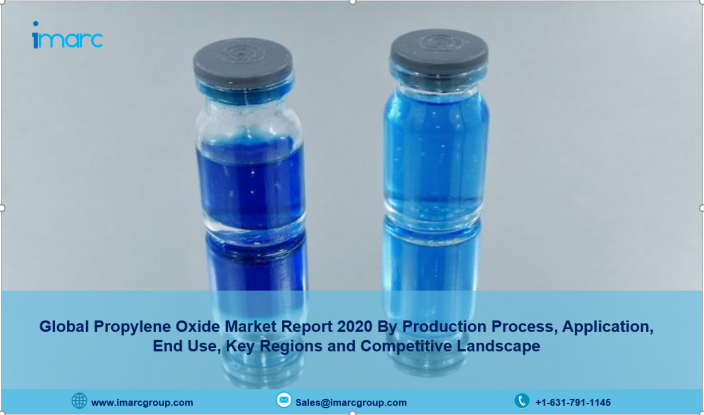
Get a PDF Sample for more detailed market insights: https://www.imarcgroup.com/propylene-oxide-market/requestsample
Market Trends
The market growth of propylene oxide is primarily driven by their growing applications in various end-use industries. The polyether polyols and propylene glycol ethers derived from propylene oxide, are often used in the textile, automotive, construction, and aerospace sectors. It is also used as a fumigant to contain bacterial contamination and insect infestations in soil and packaged food products. In line with this, small quantities of propylene oxide help in sterilizing medical equipment. Additionally, it is also employed as a transitional fluid for tissue processing in transmission electron microscopy (TEM). Apart from this, improving living standards, the expanding food and beverage (F&B) sector, and the growing health consumer consciousness are propelling the demand for packaged food products, which is driving the market for propylene oxide.
Browse full report with detailed TOC and list of figures and tables: https://www.imarcgroup.com/propylene-oxide-market
Insights on Market Segmentation:
Breakup by Production Process:
Chlorohydrin Process (CHPO)
Styrene Monomer Process
Hydrogen Peroxide Process
TBA Co-Product Process
Cumene-based Process
Breakup by Application:
Polyether Polyols
Propylene Glycols
Propylene Glycol Ethers (PGE)
Polyalkylene Glycols
Others
Breakup by End Use Industry:
Automotive
Construction
Chemicals and Pharmaceuticals
Packaging
Textile and Furnishing
Others
Breakup by Region:
North America
Asia Pacific
Europe
Latin America
Middle East and Africa
Competitive Landscape:
The report has also analysed the competitive landscape of the market with some of the key players being AGC Chemicals Americas Inc., Air Liquide S.A., BASF SE, Dow Inc., Eastman Chemical Company, Huntsman International LLC, Ineos Chemicals Company, LyondellBasell Industries Holdings B.V., Mitsui Chemicals, Repsol S.A., Royal Dutch Shell PLC, Saudi Arabia Basic Industries Corporation (Saudi Aramco), SK Chemicals Co. Ltd., Sumitomo Chemical Co. Ltd. and Tokuyama Corporation.
About Us
IMARC Group is a leading market research company that offers management strategy and market research worldwide. We partner with clients in all sectors and regions to identify their highest-value opportunities, address their most critical challenges, and transform their businesses.
IMARC’s information products include major market, scientific, economic and technological developments for business leaders in pharmaceutical, industrial, and high technology organizations. Market forecasts and industry analysis for biotechnology, advanced materials, pharmaceuticals, food and beverage, travel and tourism, nanotechnology and novel processing methods are at the top of the company’s expertise.
Contact Us
30 N Gould St
Ste R
Sheridan, WY 82801
USA
Email: sales@imarcgroup.com
Website: https://www.imarcgroup.com
Follow us on twitter: @imarcglobal
Global Pectin Market Overview 2018: Growth, Share, Demand and Forecast Research Report to 2023
The global pectin market has witnessed a healthy growth over the past few years. This can be accredited to the changing preferences of the health-conscious consumers and numerous applications of pectin in the pharmaceutical, cosmetics and food industries.
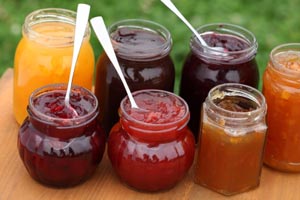
Pectin refers to a group of water-soluble carbohydrate substances which are mostly found in ripe fruits. It is obtained by the aqueous extraction from edible plant materials, such as apple pomace and citrus peel. Pectin is mainly used for its gelling property which improves the texture of drinks and gives them a jelly-like consistency. It is a high source of fibre and also treats diabetes, aids weight loss, controls diarrhoea and lowers cholesterol. A new research report by IMARC Group, titled “Pectin Market: Global Industry Trends, Share, Size, Growth, Opportunity and Forecast 2018-2023”, estimates that the market reached a volume of 69,664 Tons in 2017. The report further anticipates the market to reach a volume 93,891 Tons by 2023, at a projected CAGR of 5% over the forecast period.
Want more information about this market? Request a free report sample
Global Pectin Market Drivers/Constraints:
- Pectin is extensively used as a gelling agent in a variety of fruit-based products, such as marmalades, jellies, jams, fruit filling for bakery products and fruit preparations for desserts and yogurts. The growing demand for these products is anticipated to drive the growth of the global pectin market.
- The usage for pectin in the pharmaceutical and cosmeceutical sectors is gaining traction as it is used in wound healing preparations, specialty medical adhesives and as a natural structure provider for pastes, oils, and creams.
- Some of the other factors bolstering the market growth are the increasing demand for natural and organic ingredients, growing health concerns and the changing preference of consumers towards functional foods.
- The unavailability of raw materials and fluctuations in the prices of raw materials are the major factors hampering the growth of the market.
Raw Material Insights:
Citrus peel, apple peel and other fruit and vegetable residues are the major raw materials used in the production of pectin. Currently, citrus peels are the most popular raw material used for pectin production as they contain around 20-30% of pectin.
End-Use Insights:
Based on end-use, the report finds that jams and preserves currently represent the largest end-use segment of pectin as it preserves their fresh flavor and maintains their natural color. It is followed by drinkable and spoonable yoghurt, bakery and confectionery, fruit beverages, and other milk drinks.
Regional Insights:
On a geographical front, Europe is the leading market for pectin on account of its high demand in the food and beverage industry. Other major regions are Asia, North America and Latin America.
Competitive Landscape:
The market is highly concentrated with the presence of a handful of players due to high capital investment. Some of the leading players operating in the market are:
- CP Kelco
- DuPont
- Cargill
- Herbstreith & Fox
- Naturex
- Yantai Andre Pectin
Browse related reports:
Naphtha Market Research Report 2018-2023
Saccharin Market Research Report 2018-2023
About Us
IMARC Group is a leading market research company that offers management strategy and market research worldwide. We partner with clients in all sectors and regions to identify their highest-value opportunities, address their most critical challenges, and transform their businesses.
IMARC’s information products include major market, scientific, economic and technological developments for business leaders in pharmaceutical, industrial, and high technology organizations. Market forecasts and industry analysis for biotechnology, advanced materials, pharmaceuticals, food and beverage, travel and tourism, nanotechnology and novel processing methods are at the top of the company’s expertise.
Contact Us
IMARC Group
Tel: +1-631-791-1145
Email: sales@imarcgroup.com
Website: https://www.imarcgroup.com
Follow us on twitter: @imarcglobal
Global Neodymium-Iron-Boron Magnet Market Overview 2018: Growth, Demand and Forecast Research Report to 2023
The global neodymium-iron-boron magnet market has been witnessing a positive growth. This can be accredited to the surge in the energy harvesting sector along with the ever-increasing environmental concerns.

Neodymium-iron-boron magnets (NdFeB) are a type of permanent magnets made from an alloy of neodymium, iron and boron. They require a protective surface coating as a result of their lower Curie temperature and tendency to undergo oxidation. However, their high magnetic strength and energy efficiency makes NdFeB magnets ideal for applications where compact yet strong permanent magnets are required. A new research report by IMARC Group, titled “Neodymium-Iron-Boron Magnet Market: Global Industry Trends, Share, Size, Growth, Opportunity and Forecast 2018-2023”, estimates that the market was worth US$ 11.3 Billion in 2017. The report further anticipates the market to cross US$ 17 Billion by 2023, at a projected CAGR of more than 7% over the forecast period.
Request a sample report: https://www.imarcgroup.com/request?type=report&id=522&flag=B
Global Neodymium-Iron-Boron Magnet Market Drivers/Constraints:
- The growing demand for high magnetic strength and miniaturization of equipment in existing and emerging applications is majorly driving the global market for NdFeB magnets.
- The government initiatives to stimulate the use of green technologies so as to decrease the greenhouse gas emissions is expected to drive the growth of the global NdFeB magnet market.
- Some of the other factors propelling the demand for NdFeB magnets include their increasing and wide-ranging applications in sectors such as defence, automotive, medical, electronic, industrial, etc.; limited substitutes; flourishing end-use industries; etc.
- The high cost, low Curie temperature and propensity to undergo oxidation represent the major constraints to the applications of NdFeB magnets.
Application Insights:
On the basis of applications, the motors and generators sector is the largest consumer of NdFeB magnets, followed by HDD/CD/DVD, transportation, energy production and storage, transducers, and drives, clutches and braking. Motors and generators dominate the market as they are used in wind turbines and improve the energy output at slower wind speed, thereby, reducing energy wastage and making them energy efficient.
Regional Insights:
Country-wise, China enjoys a leading position in the global NdFeB magnet market on account of the high demand for these magnets from the major end-user industries in the region. China also has a monopoly on the raw materials used to produce these magnets which facilitates the production of these magnets in the country. It is followed by Japan, Europe and others.
Competitive Landscape:
The market is highly fragmented with the presence of various small and large manufacturers who compete in terms of volume and revenue. As China provides a secure and economical supply of the major raw materials, most of the rare earth magnets manufacturers are based in the country.
Browse related reports:
Ferrite Magnet Market Research Report 2018-2023
Samarium Cobalt Magnets Market Research Report 2018-2023
About Us
IMARC Group is a leading market research company that offers management strategy and market research worldwide. We partner with clients in all sectors and regions to identify their highest-value opportunities, address their most critical challenges, and transform their businesses.
IMARC’s information products include major market, scientific, economic and technological developments for business leaders in pharmaceutical, industrial, and high technology organizations. Market forecasts and industry analysis for biotechnology, advanced materials, pharmaceuticals, food and beverage, travel and tourism, nanotechnology and novel processing methods are at the top of the company’s expertise.
Contact Us
IMARC Group
USA: +1-631-791-1145
Email: sales@imarcgroup.com
Website: https://www.imarcgroup.com
Follow us on twitter: @imarcglobal
Global Samarium Cobalt Magnets Market Overview 2018, Demand by Regions, Share and Forecast to 2023
The global samarium cobalt magnets market is witnessing a positive growth. This can be accredited to the several advantages offered by samarium cobalt magnets such as high magnetic strength, extreme thermal stability and resistance against corrosion.

Request a sample report: https://www.imarcgroup.com/request?type=report&id=617&flag=B
A form of rare earth magnets, samarium cobalt (SmCo) magnets are made of an alloy of cobalt and samarium. These magnets exhibit optimal thermal stability, high corrosion resistance and high magnetic strength as compared to neodymium (NdFeB) magnets. In addition to this, samarium cobalt magnets require proper handling owing to their brittle nature and need to be stored in atmosphere with mild temperatures as they are highly susceptible to cracking. A new research report by IMARC Group, titled “Samarium Cobalt Magnets Market: Global Industry Trends, Share, Size, Growth, Forecast and Opportunity 2018-2023”, estimates that the market reached a value of US$ 462 Million in 2017.
Read full report with TOC: https://www.imarcgroup.com/prefeasibility-report-samarium-cobalt-magnet-manufacturing-plant
Global Samarium Cobalt Magnets Market Drivers/Constraints:
- These magnets are essentially used in various military weapon along with electrical systems in aircrafts for generating power. This is one of the major factors which is driving the growth of the market.
- Owing to their high working temperature, samarium cobalt magnets are being increasingly utilised for the applications of aerospace and military. This is another factor which is positively influencing the market growth.
- There has been a rise in the demand for miniaturisation of equipment and high magnetic strength in emerging and existing applications. This has highly contributed towards an augmented demand for samarium cobalt magnets across the globe.
- However, these magnets are costlier than ferrite magnets and have to be handled with care owing to their brittle nature. This, in turn, has hindered the growth of the market.
Application Insights:
Samarium cobalt magnets are currently being used across various sectors. Defence sector represents the largest application segment, holding the majority of the market share. This can be attributed to the higher curie temperature of samarium cobalt magnet, which is considered ideal for high-field strength. Defence sector is followed by aerospace, motors and actuators, electronics and medical devices.
Regional Insights:
On a geographical front, China enjoys a leading position in the global samarium cobalt magnets market owing to the easily available raw materials which are required to produce samarium cobalt magnets. Other major markets include the United States and Europe.
Competitive Landscape:
The market is fragmented with the presence of numerous small and large manufacturers who compete in terms of prices and quality. Some of the leading players operating in the market are:
- Ningbo NGYC (Ninggang Permanent Magnetic) Materials Co. Ltd.
- Ningbo Ketian
- Arnold Magnetic Technologies
- ADAMS Magnetic Products
- Bunting
- Eclipse Magnetics
- Hangzhou Permanent Magnet Group (HPMG)
- Thomas & Skinner Inc.
Browse related report:
Rare Earth Magnet Market Research Report: https://www.imarcgroup.com/rare-earth-magnet-manufacturing-plant
Neodymium-Iron-Boron Magnet Market Research Report: https://www.imarcgroup.com/neodymium-iron-boron-magnet-manufacturing-plant
About Us
IMARC Group is a leading market research company that offers management strategy and market research worldwide. We partner with clients in all sectors and regions to identify their highest-value opportunities, address their most critical challenges, and transform their businesses.
IMARC’s information products include major market, scientific, economic and technological developments for business leaders in pharmaceutical, industrial, and high technology organizations. Market forecasts and industry analysis for biotechnology, advanced materials, pharmaceuticals, food and beverage, travel and tourism, nanotechnology and novel processing methods are at the top of the company’s expertise.
Contact Us
IMARC Group
USA: +1-631-791-1145
Email: sales@imarcgroup.com
Website: https://www.imarcgroup.com
Follow us on twitter: @imarcglobal
Global Cross Laminated Timber Market Overview 2018: Growth, Demand and Forecast Research Report to 2023
The global cross laminated timber market is growing at a healthy rate as they are environment-friendly and can be easily installed. Owing to this, cross laminated timber is now being increasingly used in the construction industry which has further given impetus to the market.
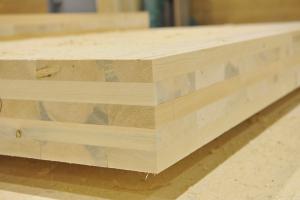
Request a sample report: https://www.imarcgroup.com/request?type=report&id=602&flag=B
Cross laminated timber (CLT) is a panel of wood, designed by gluing together layers of solid-sawn timber. The process offers improved dimensional stability to the product, in-plane and out-of-plane strength, stiffness and increases the splitting resistance. Over the years, cross laminated timber has replaced other concrete alternatives such as steel and masonry due to their cost effectiveness, easy and faster installation, high strength, etc. A new research report by IMARC Group, titled “Cross Laminated Timber Market: Global Industry Trends, Share, Size, Growth, Opportunity and Forecast 2018-2023”, estimates that the market was worth US$ 564 Million in 2017. The report further anticipates the market to reach a value of approximately US$ 1.3 Billion by 2023, at a projected CAGR of around 15% over the forecast period.
Read full report with TOC: https://www.imarcgroup.com/cross-laminated-timber-manufacturing-plant
Market Drivers/Constraints:
- The green building movement and other international initiatives are gaining momentum worldwide. Cross laminated timber is regarded as environment-friendly material which requires low energy consumptions as compared to its counterparts.
- The use of cross laminated timber offers structural capability and reduction in construction cost as well as time, making it apt for usage in all elements of construction such as walls, roofs, floor, etc.
- The consistent marketing efforts by manufacturers have also aided in creating awareness about the advantages of cross-laminated timber among consumers.
- However, there are several factors that hamper the market growth. Structures created using cross laminated timber require external support and added insulation. Moreover, any kind of future transformations with structure is difficult in comparison to the traditional constructional materials.
Application Insights:
Residential represents the largest application segment in the cross-laminated timber market. Residential is followed by educational institutes, government/public buildings and commercial spaces.
Regional Insights:
On a geographical front, Europe enjoys a leading position in the global cross-laminated timber market on account of its high demand in the region. In Europe, Austria exhibits a clear dominance in the market. It is followed by North America (including the United States and Canada).
Competitive Landscape:
The market is concentrated with the presence of large manufacturers who compete in terms of prices and quality. There is an intense competition in the market which makes it difficult for new players to survive. Some of the leading players operating in the market are:
- Stora Enso
- KLH
- Binderholz
- Mayr Melnhof
- Hasslacher
Browse related reports:
European Cross-Laminated Timber Market Research Report: https://www.imarcgroup.com/european-cross-laminated-timber-market
North America Cross-Laminated Timber Market Research Report: https://www.imarcgroup.com/north-america-cross-laminated-timber-market
About Us
IMARC Group is a leading market research company that offers management strategy and market research worldwide. We partner with clients in all sectors and regions to identify their highest-value opportunities, address their most critical challenges, and transform their businesses.
IMARC’s information products include major market, scientific, economic and technological developments for business leaders in pharmaceutical, industrial, and high technology organizations. Market forecasts and industry analysis for biotechnology, advanced materials, pharmaceuticals, food and beverage, travel and tourism, nanotechnology and novel processing methods are at the top of the company’s expertise.
Contact Us
IMARC Group
Telo No: +1-631-791-1145
Email: sales@imarcgroup.com
Website: https://www.imarcgroup.com
Follow us on twitter: @imarcglobal
- ← Previous
- 1
- 2
- 3
- …
- 8
- Next →